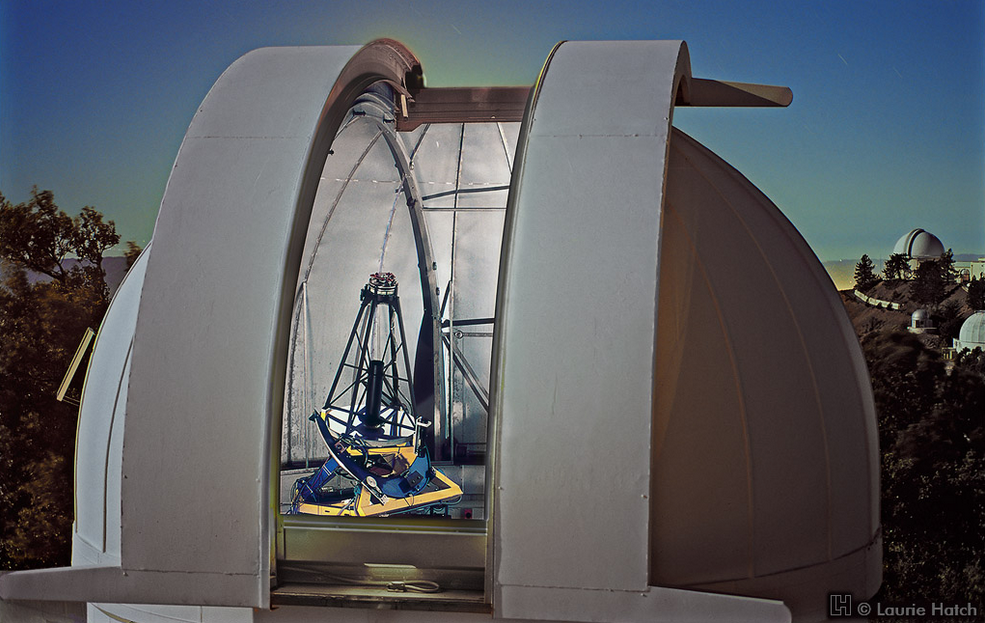Fire Emergency: The list of immediate needs is growing and our priorities may need to evolve with circumstances. Your gift to the UCO Director’s Discretionary Fund today will provide the flexible support necessary for Director Max to address needs as they arise in this rapidly changing situation.
Science
-
Current Research
-
Search for Extrasolar Planets
-
Adaptive Optics & Laser Guidestars
-
Evolution of Stars & Galaxies
-
Supernovae Survey to Cosmology
-
Brown Dwarfs & Low-Mass Stars
-
Distant Radio Galaxies
-
Massive Intergalactic Hydrogen Clouds
-
Optical Search for Extraterrestrial Intelligence
-
Education & Outreach
-
Active Telesopes
-
Historic Telesopes
-
Live HAMCAMS
-
Observer Information
Mailing List

- The Katzman Automatic Imaging Telescope (KAIT) searches for supernovae on every clear night of the year. Photo by Laurie Hatch.
Lick astronomers look at supernovae to discover how and why stars explode.
Astronomers seek to understand the overall role of supernovae in cosmology, and the dimensions and history of the universe.
The Katzman Automatic Imaging Telescope (KAIT) is programmed to search robotically for distant supernovae on every clear night of the year. If KAIT "sees" differences in luminosity within a galaxy, indicating a possible supernova, it notifies astronomers, who investigate further using the Kast spectrograph.
Supernovae and Black Hole Research
Watch Dr. Alex Filippenko, Professor of Astronomy at University of California, Berkeley, discuss supernovae and black hole research at Lick Observatory.
